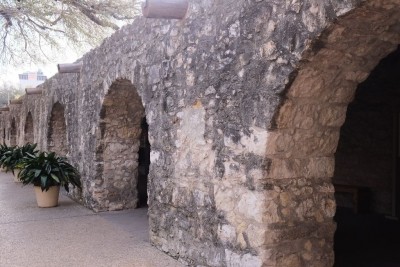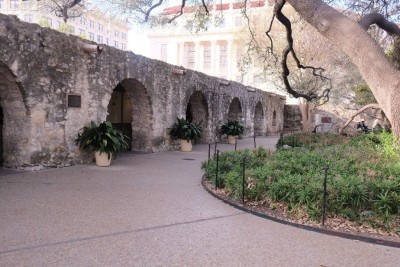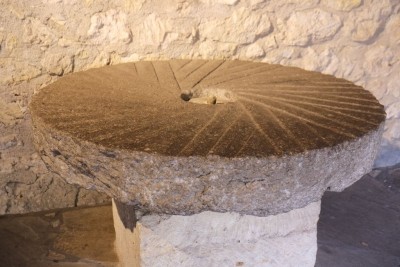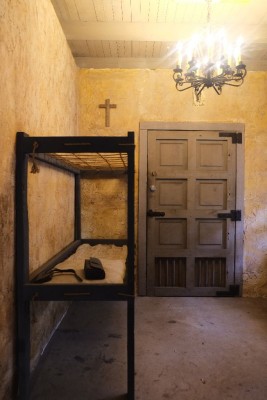Side by Side at the Alamo
While traveling in Texas earlier in March, we spent part of a sunny afternoon at the Alamo, formerly the Spanish mission, San Antonio de Valero.
Builders laid the foundation for the stone church of the Spanish mission in 1744. The stone church and surrounding convento (home for a Spanish priest) and adobe homes housed Spanish missionaries and Native American converts from the Coahuiltecan tribes for almost seventy years. Missionaries taught converts blacksmithing, carpentry, farming, stonework, weaving, and how to raise livestock. I’m sure many Spanish missionaries had good intentions of bringing the natives to Christ and improving their lives. However, this practice also helped to establish Spanish culture and rule in the area.
In 1793 local authorities took over the mission, changing its purpose to a military fort. Spanish power in the area declined until Mexico declared its independence in 1822. The Alamo afterwards remained a Mexican military outpost.
By 1835, Texas was populated with many pioneers from the United States. These Texians wanted independence from Mexico. This desire for independence erupted into a revolution. Mexican president Antonio Lopez de Santa Anna marched into Texas to quell the rebellion. He and his troops arrived at the Alamo on February 23, 1836, and began a thirteen-day siege. Far to the east at Washington-on-the-Brazos near Houston, 59 Texians met in a convention and declared Texas Independence on March 2. On March 6, Mexican troops stormed the Alamo and annihilated the Texian force with only a handful of survivors. The bravery of the defenders of the Alamo inspired the battle cry, “Remember the Alamo!”
As I think back about what I remember from our visit to the Alamo, which happened to be on March 2, Texas Independence Day, I remember the stone arches of what were once living quarters and offices.


I remember a millstone brought there all the way from the Canary Islands off the coast of Africa.


I remember the first recorded Spanish hospital in Texas.

I remember the well in the courtyard.

And, of course, I remember the iconic and beautiful stone chapel.

I also remember a tribute inside the chapel to men who defended the Alamo. These included one from Alabama, two from Arkansas, one from Connecticut, ten from England, four from Georgia, two from Germany, one from Illinois, ten from Ireland, fifteen from Kentucky (including James Bowie), four from Louisiana, one from Maryland, four from Massachusetts, two from Mississippi, five from Missouri, one from New Hampshire, one from New Jersey, six from New York, seven from North Carolina, four from Ohio, fifteen from Pennsylvania, one from Rhode Island, four from Scotland, seven from South Carolina (including William Travis), eight from Mexico, thirty-two from Tennessee (including Davy Crockett), one from Vermont, fourteen from Virginia, and twenty-six from unknown locations.
Those touring the chapel and strolling the grounds of the Alamo on that bright Thursday on the anniversary of Texas Independence Day were also from many places. I noticed that several tourists that day were Hispanic. How wonderful that descendants of people groups from both sides of that conflict could tour the scene of a battle in peace and harmony.
And He will judge between many peoples
And render decisions for mighty, distant nations.
Then they will hammer their swords into plowshares
And their spears into pruning hooks;
Nation will not lift up sword against nation,
And never again will they train for war.
Micah 4:3

